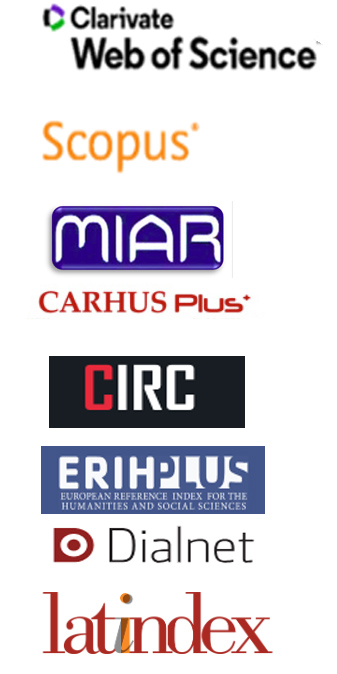Más Allá del Museo: El Conservador de Arte Contemporáneo en el Sector Privado. Desafíos, Procedimientos y Soluciones
Resumo
On a purely academic basis, conservation focuses on the maintenance of artistic and historical objects for the enjoyment of present and future generations. Implicitly, this is commonly related to museums and public cultural institutions, as well as the conservation work that takes place in such places. However, conservation does not only work in public sectors, as the private sector is a considerable source of work for many conservators who employ their knowledge and experience in often demanding situations. In addition to the problems of contemporary art with regards to new techniques, concepts and materials, there are eventualities and damages that could have easily been avoided if certain guidelines had been set beforehand. The following article presents how contemporary art collecting and conservation are related with the aim of introducing situations experienced by conservators and proposing concrete solutions that can be easily applied.
Downloads
Referências
AIC (2021). Spring CAN! Conversation: Contextualizing the decision-making model in contemporary art conservation, Talks by Bloser, Joy; Betancor, Julia; Wachowiak, Miroslaw; and Opeña, Marieke. Live Webinar, American Institute for Conservation [4 de abril de 2021]
BOLAÑOS, M. (2009). Historia de los museos en España: memoria, cultura, sociedad. Madrid: Trea.
BRODIE, N.(2019). “The ‘Art World’ of the Auction Houses: The Role of Professional Experts”. Arts 8 (2): 56. https://doi.org/10.3390/arts8020056 [11 de abril de 2021]
DALL’AGLIO, S. (2020). “The great collector and his man in Rome. Leopoldo de’ Medici and his letters to Ottavio Falconieri, 1662–75”. Journal of the History of Collections, 32 (3): 431-442.
DELBOURGO, J.(2017). Collecting the World: The Life and Curiosity of Hans Sloane. Londres: Penguin.
GARCÍA F; DE LOS SANTOS, M. ET AL.(2018) ”Los orígenes, 1819-33”. En: Portús Pérez, Javier (coord.) Museo del Prado 1819-2019. Un lugar de memoria. Madrid: Museo Nacional del Prado. 22-47.
GIEBELER, J. ET AL. (2019). The Decision-Making Model for Contemporary Art Conservation and Presentation. Colonia: Cologne Institute of Conservation Sciences / TH Köln.
GILI, P. (2013). “Awareness in rolling, research about its effects and use of polyurethane memory foam”, CeROArt [Online], EGG 3 | 2013.
ICOM-CC (2009). Terminología para definir la conservación del patrimonio cultural tangible. 15a Conferencia Trienal, New Delhi, 22-26 de septiembre de 2008.
LINDEMANN, A. (2006). Collecting Contemporary Art. Koln: Taschen.
MCINTOSH, WILLIAM D. Y SCHMEICHEL, BRANDON (2004). “Collectors and Collecting: A Social Psychological Perspective”. Leisure Sciences, 26(1): 85-97.
NTOULIA, ELISSAVET (2017). “The birth of the public museum”, Wellcome Collection, Stories. <https://wellcomecollection.org/articles/W_0kHhEAADUAbHiJ> [11 de abril de 2021]
PARDO-TOMÁS, JOSÉ (2018). “La historia natural y el coleccionismo en gabinetes de curiosidades y museos de papel”. María Sybilla Merian y Alida Withoos: mujeres, arte y ciencia en la Edad Moderna. Santander: Editorial Universidad de Cantabria, 59-66. http://hdl.handle.net/10261/172187
RICHARD, MERY T ET AL. (Eds.) (1997) Art in Transit: Handbook for Packing and Transporting Paintings. Washington DC: The National Gallery of Art.
SHELLEY, MARJORIE (1987) The Care and Handling of Art Objects: Practices in the Metropolitan Museum of Art. Nueva York: The Metropolitan Museum of Art.
WOOLLEY, LEONARD (1962). Ur Excavations. the Neo-Babylonian and Persian Periods. Londres: The Trustees of the British Museum.
Os autores conservam os direitos de autor e de propriedade intelectual e garantem à revista Ge-Conservación o direito de edição e publicação do trabalho, sob a Creative Commons Attribution License. Este permite a partilha do trabalho, por outros, com o reconhecimento da autoria do trabalho e da publicação inicial nesta revista.
Os artigos podem ser utilizados para fins científicos e formativos, mas nunca com fins comerciais, expressamente, sancionados por Lei.
A informação existente nos artigos é da exclusiva responsabilidade dos autores.
A revista Ge-Conservación e os autores podem estabelecer, em separado, acordos adicionais para a distribuição não exclusiva da versão da obra publicada na revista (por exemplo, colocá-la num repositório institucional ou publicá-la em livro), com o reconhecimento da sua publicação inicial nesta revista.
É permitido e incentivado aos autores difundirem os seus trabalhos, electronicamente (por exemplo, em repositórios institucionais ou no seu próprio site) depois da sua publicação na revista Ge-Conservación, já que pode dar lugar a intercâmbios produtivos, assim como a citações mais amplas e mais cedo dos trabalhos publicados pelo autor.
Os dados pessoais fornecidos pelos autores são utilizados, unicamente, para os fins da revista e não serão proporcionados a terceiros.









